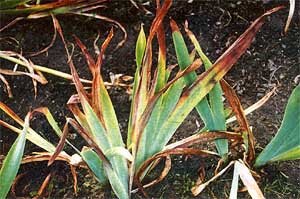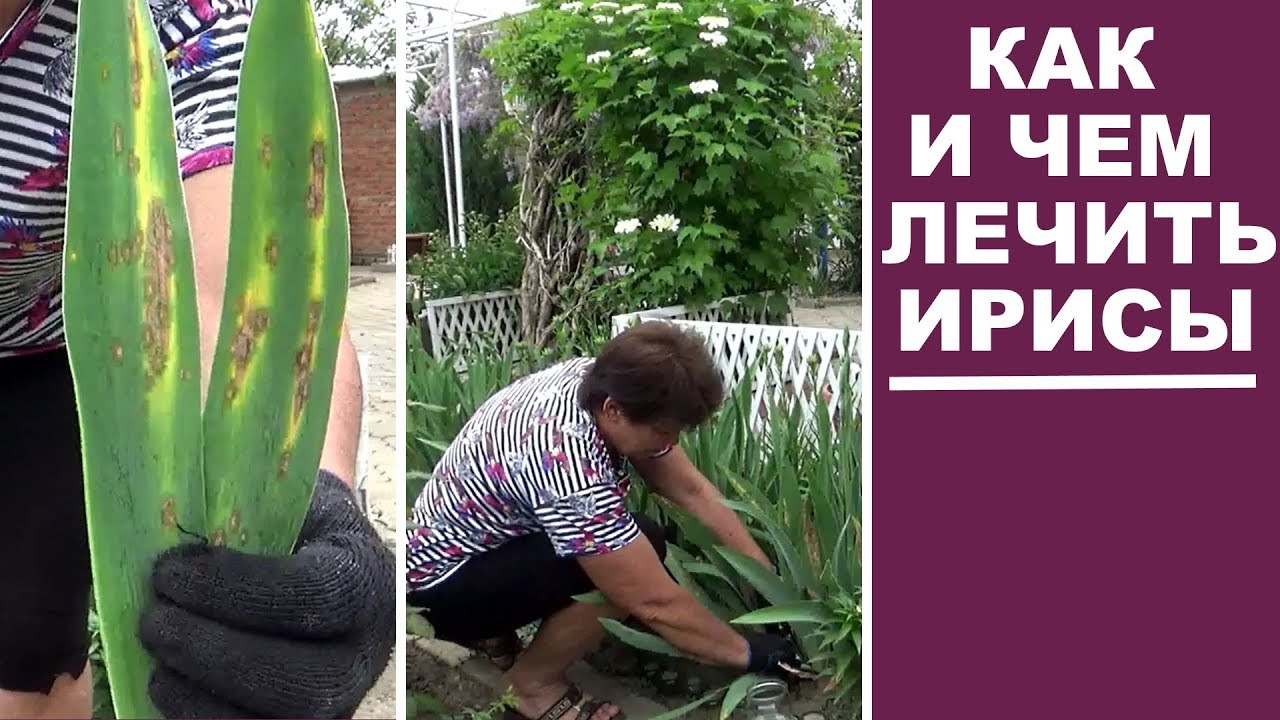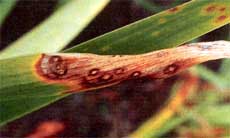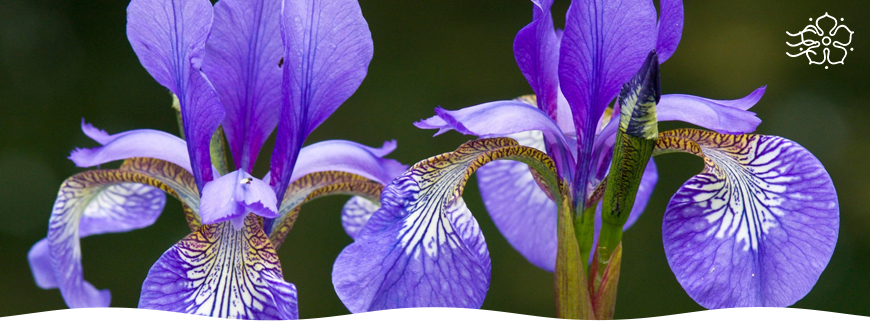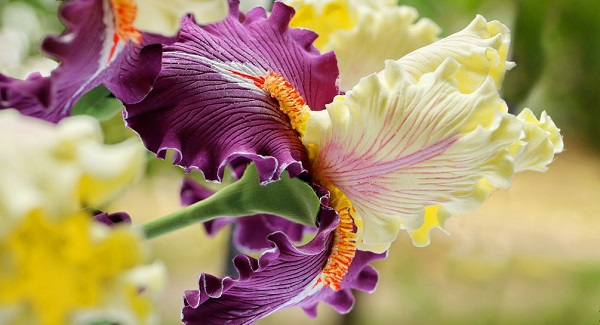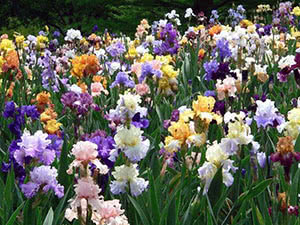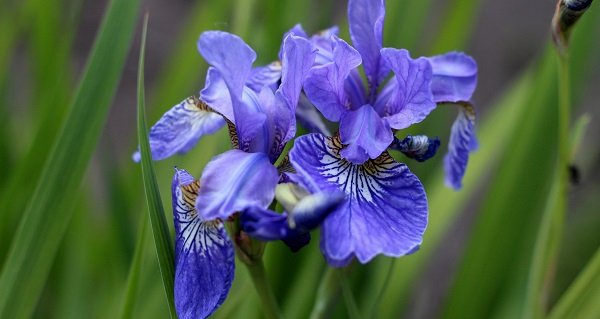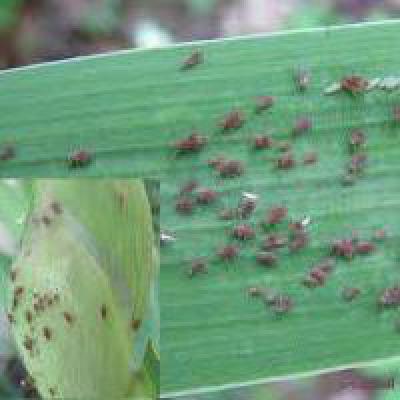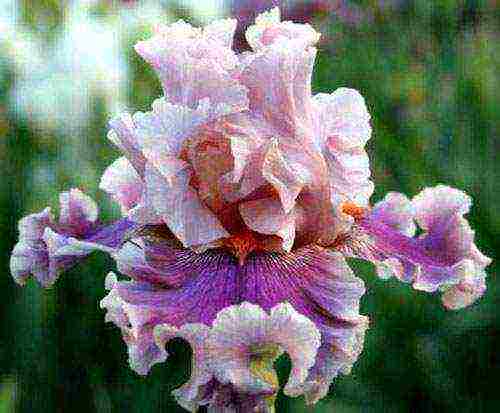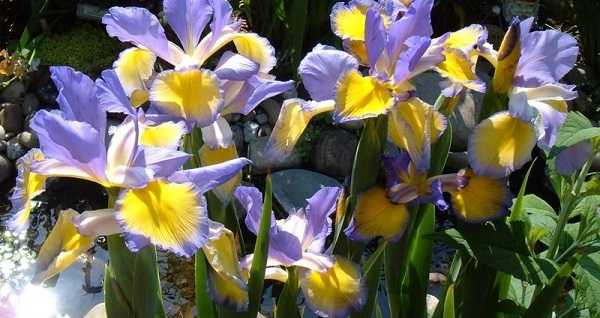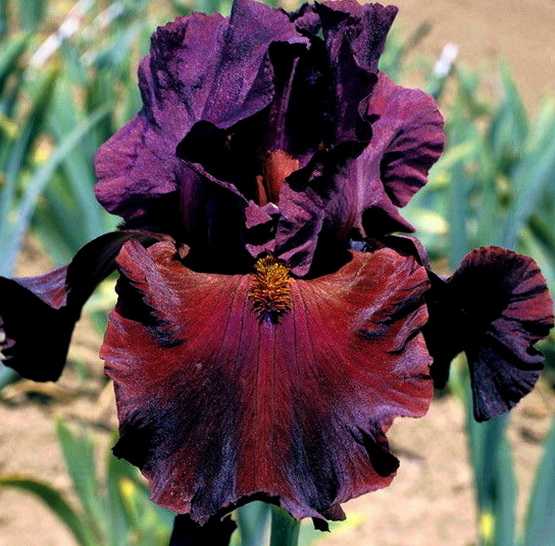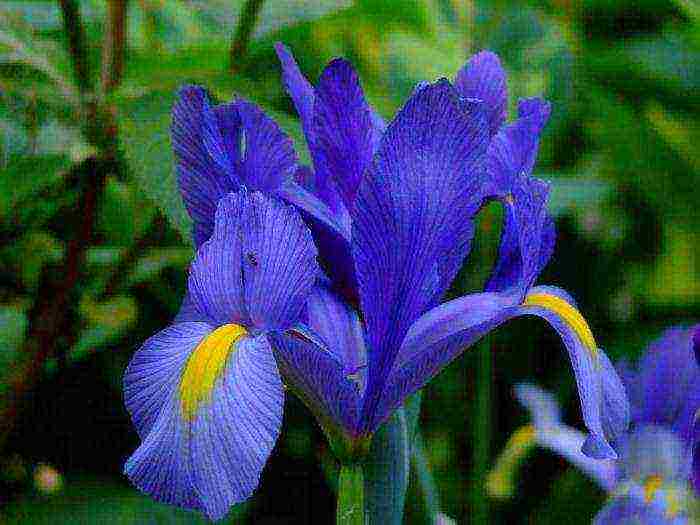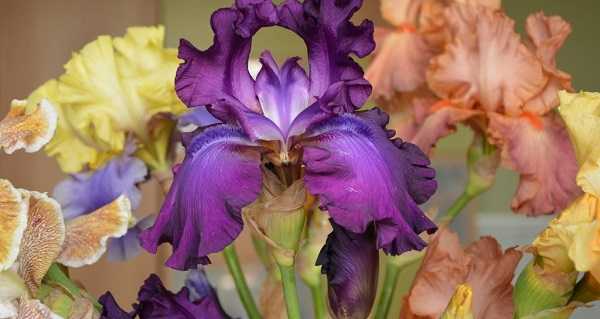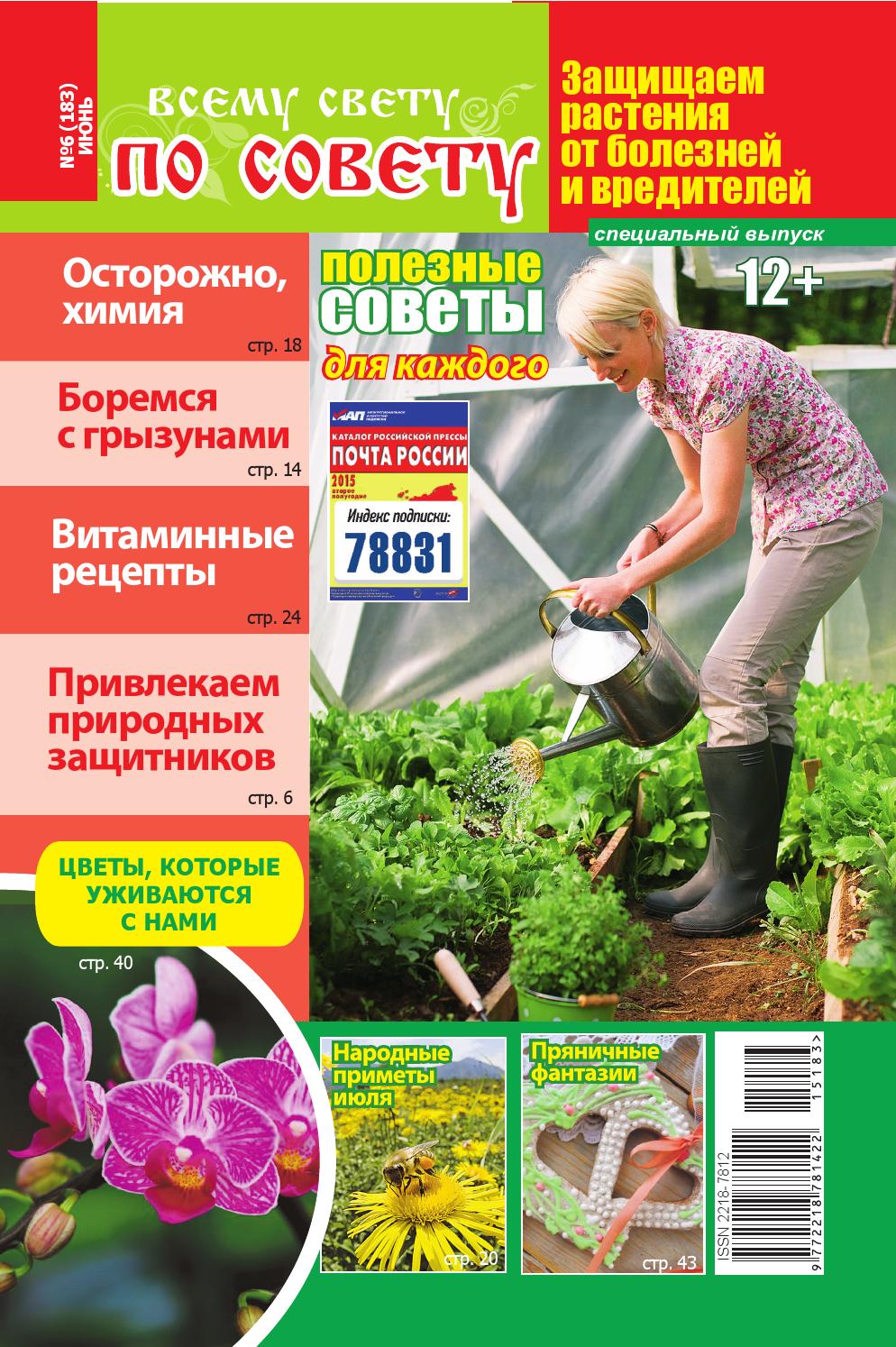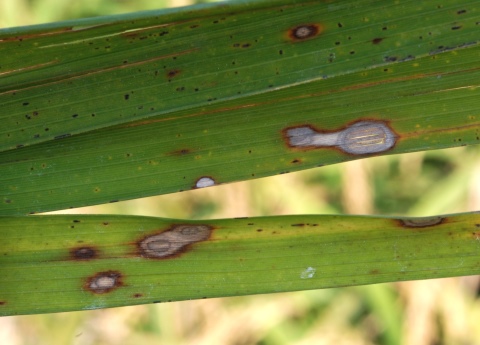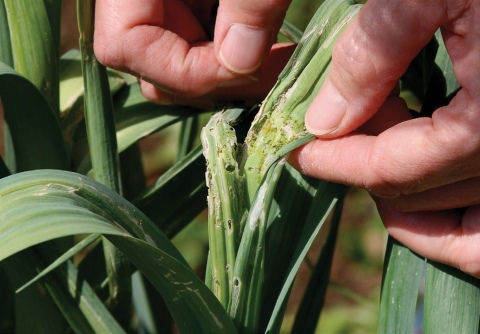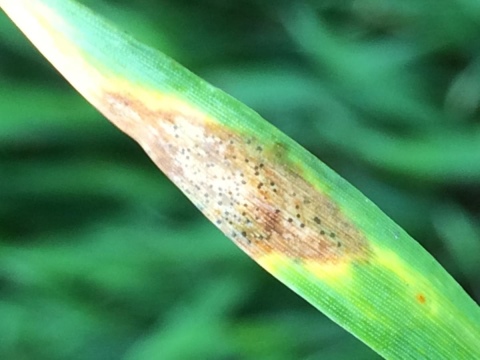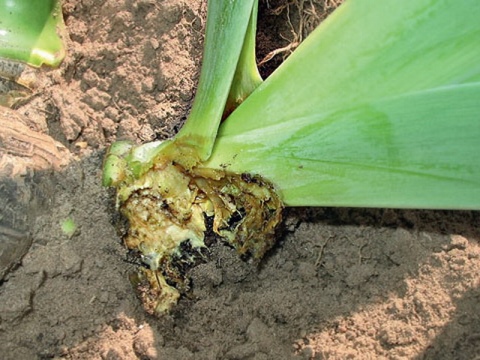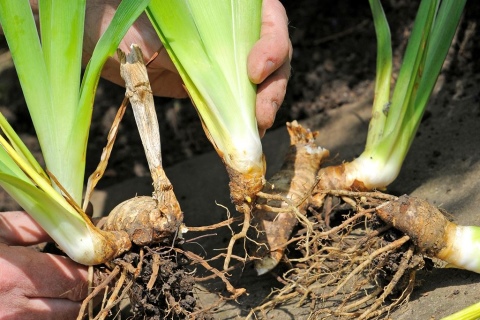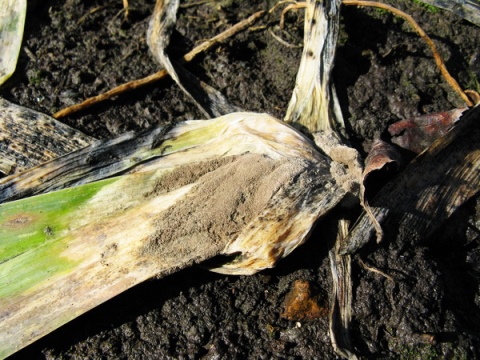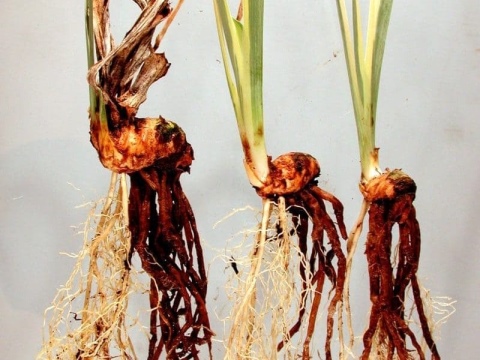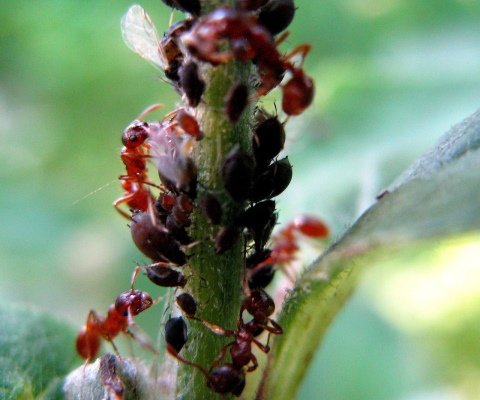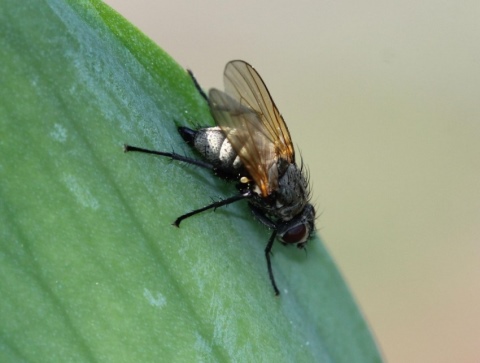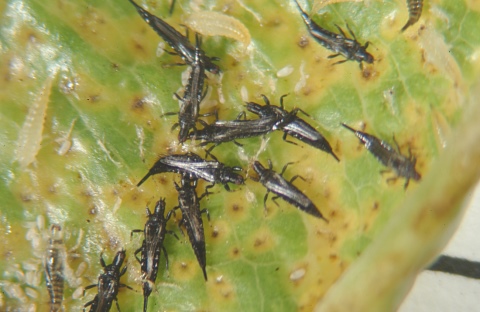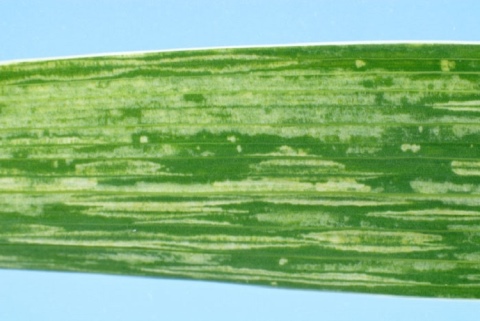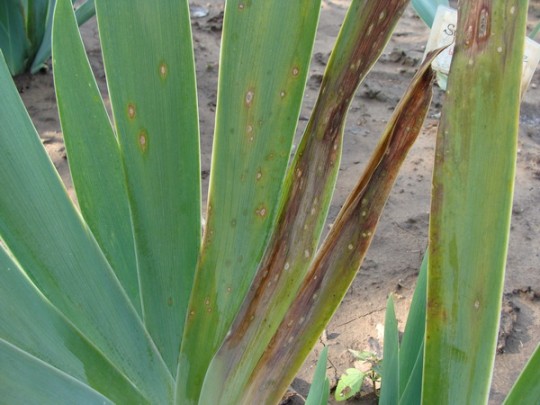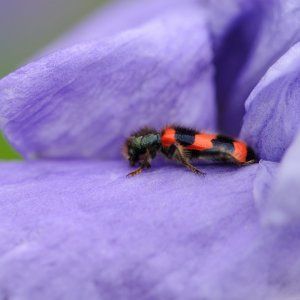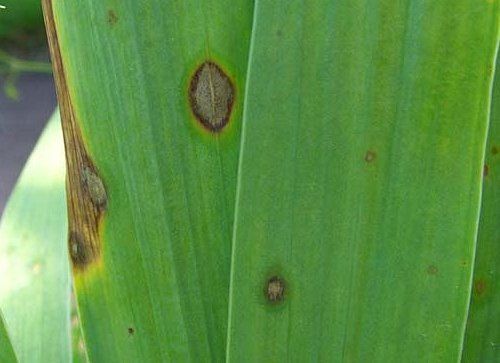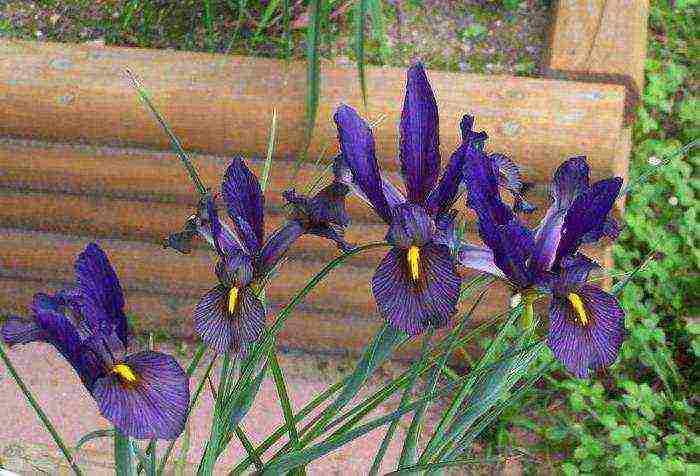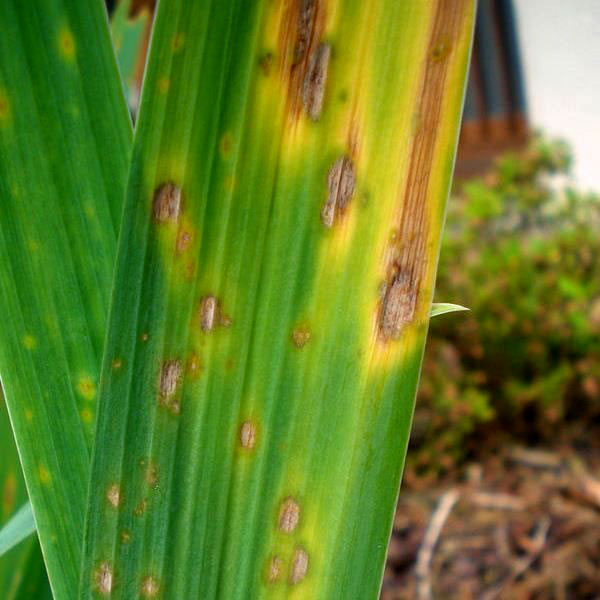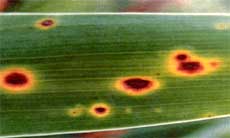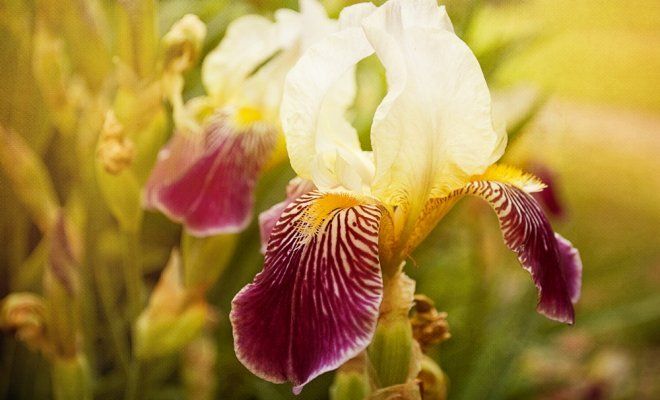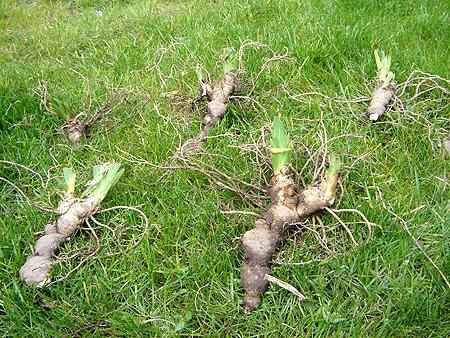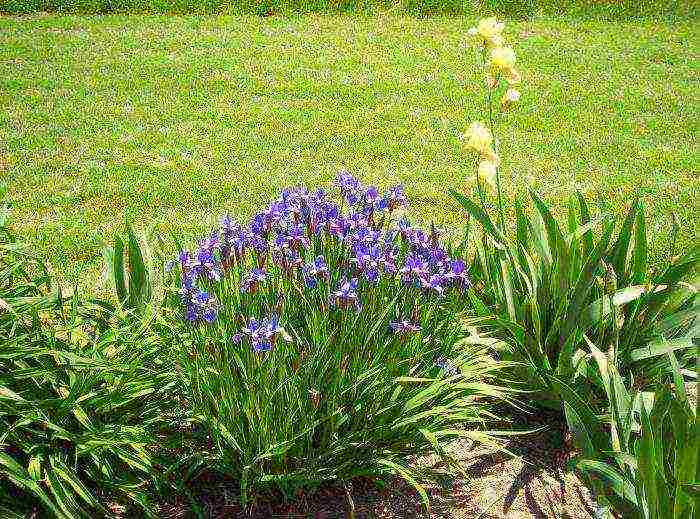Iris diseases - video
This article will describe the possible, as well as ways to prevent them. The most terrible disease of irises is bacteriosis, which causes rhizome rot. Plants that are affected by this disease stop flowering, they have a low fan of leaves, containing 3 - 4 leaves. In August, you need to dig up the plant, separate the rotten parts of the rhizome, and pickle them in raspberry-colored potassium permanganate for 30 minutes. You also need to change the planting site or change the soil, after adding more sand to the new soil mixture, and plant the iris again.
Another disease is wet rot, which damages the base of the stems and rhizomes. Starting at the tips, the leaves of the irises turn brown and dry. As a result, the plants are stunted. The rhizome becomes powdery as rot spreads inside it. Although the outer shell of the roots is preserved. It is worth noting that such a disease can still affect gladiolus, tulip, carnation and hyacinth. Most often, the causative agent of wet rot (bacteria) is introduced into the soil with manure. It is necessary to immediately destroy diseased plants, and not plant irises in this place for 5 years.

To prevent the disease, there are the following measures: pickle the rhizome before planting for half an hour in potassium permanganate (for 0.5 l of water 0.5 teaspoon), either in a solution of "Maxima", or in a solution of "Fitosporin" (for 10 l of water, use 2 - 3 tablespoons).
Gray rot is no less dangerous disease, since it damages both the leaves and the rhizome. A gray coating forms on the leaves, which causes them to rot, and the affected parts of the rhizome develop dry rot. Excess nitrogen in the soil can provoke this disease, as well as high humidity in the air and soil.
Leaf lesions cause heterosporia. In the second half of summer, gray spots with a watery yellowish border appear on the leaves, which cause the leaves to dry out. In this case, spraying with any preparation that contains copper (most simply copper oxychloride) or "Zircon" helps. Moreover, the leaves that are already affected must be removed and burned.

If brown-brown stripes appear on the leaves, then they are affected by rust. In this case, you can give top dressing with potassium and phosphorus, spray with a copper-containing preparation or colloidal sulfur. This disease usually affects only weakened plants.
If the leaves have acquired a yellow-green color, then this is, as a rule, a viral disease of the mosaic of the leaves. Affected plants must be destroyed immediately. Moreover, they cannot be put into compost.

Simple prevention helps prevent everything. In the spring, irises (along with phloxes, roses, perennial asters and peonies) after being bored should be well watered with a 1% solution of a copper preparation. Moreover, this must be done at the very beginning of the regrowth of the leaves. Copper sulfate, Bordeaux liquid or copper oxychloride can be used as a copper preparation. To prepare the solution, 1 teaspoon of one of the preparations for 0.5 liters of water is enough. Apply the ash to the soil under the irises, using 0.5 cups for each plant.
Spray regularly (once every 2 weeks) until all flowers begin to bloom, not just irises, using Epin - Extru in conjunction with Zircon, or Ecoberin in conjunction with Zdorovy Sad. Be sure to cover all cuts with ash when transplanting or planting.Also spray the irises with a honey-containing preparation and feed with ash before wintering. The soil for Germanic irises should be neutral, or even slightly alkalized, as they are very fond of calcium. To do this, you need to regularly apply ash in autumn and spring.
Preventive measures
In order to prevent the development of diseases and pest attacks on home or garden chrysanthemums, it is enough to follow a number of simple rules.
- Thoroughly weed and loosen the soil. This will avoid stagnation of root moisture, provide good growing conditions.
- Avoid applying fresh manure. It can cause burns to the roots, severely damage the plant.
- Watering with extremely moderately warm water, it is better if it is at room temperature.
- Apply potash and phosphorus-based fertilizers regularly. Top dressing should take place in liquid form every 10 days. No fertilizer is applied during the flowering period.
- Observe the distance when planting when it comes to growing chrysanthemums in the garden. It is not necessary to thicken them, otherwise the risks of developing diseases will be significantly increased.
- Carry out preventive spraying with Bordeaux liquid 10 days after planting. Before sending to the ground, cuttings must be treated with a solution of "Fundazole" to prevent fungal infections.
- Indoor chrysanthemums up to 3 years old need to be replanted annually. At an older age - once every 2 years.
Be sure to thoroughly clean your garden in the spring and fall. It is in the fallen foliage that pests live, capable of causing serious harm to plantings in spring. Under the chrysanthemums themselves, you also need to remove the fallen parts of the plant.
How to grow and treat chrysanthemum, see below.
Plant diseases
Infectious lesions manifest themselves in different symptoms. Most often, the buds disappear, growth stops, the foliage withers, the roots rot and die off, spots atypical for their color appear on the shoots.
The following fungal infections are considered the most common.
- White rust. With this disease, the leaves are covered with rounded yellow spots with a diameter of no more than 5 mm. A whitish bloom forms on the back of the leaves. When the disease spreads, the lesion also affects the petals of the flower.
- Powdery mildew. An infectious disease in which a bloom similar to scattered flour forms on the entire surface of the chrysanthemum bush. Plants that do not receive potassium supplements are at risk.
- Gray rot. It looks like mold sprinkled on foliage. Spots with a watery structure cover all the shoots of the plant in the above-ground part. In dense plantings, spread is very fast. Affected plants are destroyed.
- Fusarium. In this disease, the leaves of the plant curl, rot forms on the stem, and the root dries up.
- Septoria. It is characterized by damage to the leaves, on the surface of which the spores of the fungus leave yellow-brown spots. The disease develops on the lower shoots, may be associated with thickening of plantings, poor harvesting of fallen leaves.
- Rust. With this disease, a rusty coating forms on the surface of the leaves, which quickly spreads throughout the bush. On the reverse side, the shoots are covered with rounded heaps of dark brown color. The problem mainly arises in greenhouse and greenhouse plants, house chrysanthemums in pots.
Root bacterial cancer is considered a rare but dangerous disease for chrysanthemums. When it appears on the stems, deforming growths are formed, they also affect the root system. All infected bushes are subject to mandatory destruction.
Chrysanthemum is quite resistant to viral diseases, but signs of mosaicism, white spot or dwarfism can also appear on it. There are also non-infectious problems. For example, stem brittleness and cracking are associated with over-watering.
When moisture stagnates at the root, it also begins to rot, the shoots of the plant wither, lose their color brightness, and stop growing and blooming. When red streaks appear on the leaves, it can be understood that the flower has suffered from frost, so it needs shelter.
What does the iris fly look like and what does it harm?
The iris flower girl (Acklandia servadeii) belongs to the family of flower flies and is very similar to the common housefly - a dipteran insect with large faceted eyes and a gray-black body with yellowish spots.
At the very end of April - beginning of May, adult insects feed on plant juices, piercing the petals of the buds and scraping off the epidermis, and then lay their eggs in the buds of irises. Whitish larvae (“worms” 1-2 cm long) hatch from the eggs, which continue to actively feed inside the unopened bud, causing it to dry out and rot from the inside (“wateriness”). The iris bud dies without opening. The larvae, having finished feeding, fall to the ground, where they pupate at a distance of several centimeters from the rhizome of the plant and in this form wait out the winter in the upper layers of the soil. The next year the cycle repeats - only one generation of the iris flower girl is born during the season.
How to detect the presence of a pest on flowers? With outwardly normally developing peduncles, the outer petals of unopened buds are covered with spots, and then begin to curl and dry out. You may also notice a greenish discharge from the fly. Over time, the buds themselves darken, rot from the inside and become like a soft brown mass.
According to some studies, medium- and late-flowering varieties of hybrid bearded and dwarf irises are most susceptible to infection, while, for example, Siberian iris and salt-loving iris fly practically does not affect.
Resuscitation of the seemingly hopeless
If the iris stem is severely damaged, I wash it, cut everything to healthy tissue, while sometimes only a piece of the stem with a healthy bud remains. But he can give us a start, if the variety is valuable.
Next, it is better to soak the rest of the planting material in potassium permanganate or bleach, and then apply everything the same as in the previous case.
It is necessary to plant such an iris in a new place in a mixture of soil and sand. It is better to remove the soil from the remaining hole, sprinkle it with fresh, or spill it with bleach. I have such nurses (see photo).
When replanting in the autumn, I cut and dry the fans, and then dip them in a thick solution of Fitosporin-M, dry them slightly and plant them.
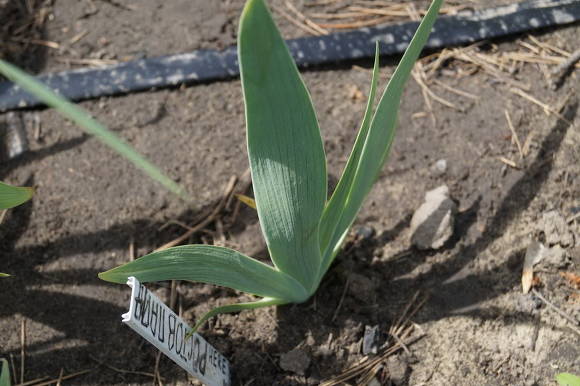
Causes of common problems and their solutions
Mistakes in the maintenance of gloxinia during the flowering period lead to serious consequences. Correct and timely identification of the causes will increase the chances of saving the plant.
Do not dissolve
Why do gloxinia buds not fully open, then turn brown and become soft?
Causes:
- there are too many buds on the plant with a lack of fertilizing;
- depletion of the soil;
- lack or excess of lighting;
- wrong temperature regime;
- low air humidity;
- pests: spider mites or thrips.
Solution:
- Examine the plant.
- In the event of an attack by pests, carry out an insecticide treatment, following the instructions on the package of the product.
- During the period of growing green mass, it is necessary to apply nitrogen fertilizers.
- When forming the first buds, you should switch to a mineral complex rich in potassium and phosphorus.
- Adjust the lighting mode.
- The plant needs bright, diffused light.
- The duration of daylight hours for gloxinia should be 12-14 hours.
- If the leaves stretch upward, the plant lacks light. In this case, you need to move the pot to another window sill or arrange artificial lighting.
- With an overabundance of light, it is necessary to shade the gloxinia with gauze, tulle, paper from the direct rays of the sun and put the plant away from the glass.
- Adjust the temperature in the room. The daytime temperature favorable for gloxinia is + 20 + 22 ° C, at night + 18 ° C. The rest period should take place at + 10 + 14 ° C.
- Adjust the humidity level by placing a wide container of water next to the plant.
- Spray the surrounding area with a spray bottle, avoiding the ingress of water on gloxinia.
- It is convenient to use two pallets on a small windowsill.
- Fill the lower deeper sump with fine gravel, expanded clay and moisten with water. Place the second pallet with the pot on the gravel.
Turn black
The buds wither without blooming, become black and dry.
Causes:
- wintering tubers in a too cold room;
- excessively dry air;
- depleted soil;
- dry soil or too frequent soil moisture.
Solution:
- Examine the gloxinia tuber and treat with Epin, a drug that has an anti-stress effect.
- Increase the humidity in the room.
- In the heat, shade the plant, protecting it from direct sunlight.
- Replace depleted soil with fresh soil.
- Maintain intervals between waterings.
- Establish timely soil moistening, avoiding overdrying of the earthy coma.
Dry up
The buds dry without blooming.
Causes:
- dry air;
- cold air, drafts;
- high air temperature;
- excess or lack of lighting;
- depleted soil;
- overflow.
Solution:
- Raise the humidity level in the room.
- Organize ventilation, avoiding drafts.
- Adjust the lighting mode.
- Feed the plant with phosphorus-potassium fertilizers.
- Adjust watering.
- The soil should be loose and slightly damp.
Empty inside
When opened, the sepals show a small green pea instead of a bud. After a while, the peduncle turns brown. An undeveloped bud falls off.
Cause:
- cold wintering;
- stress from storage at too low temperatures.
Solution:
- Remove the defective bud by carefully cutting off the peduncle.
- After a while, a new bud will form.
- A full flower should open up.
- Carry out several sprays with Epin according to the instructions on the package.
Rotting
IMPORTANT: Do not confuse dry black buds with decaying ones. When rotting, the bud turns dark brown or black, but remains soft and moist. Reasons:
Causes:
- waterlogging of the substrate;
- too acidic reaction of soil pH;
- excess nitrogen.
Solution:
- Limit watering for several days so that the substrate dries out.
- Water gloxinia only through the sump.
- Make sure that the ground is not excessively wet, but do not dry out.
- In acidic soil, you need to transplant the plant with a complete replacement of the potting mix.
- Use only complex fertilizers, which, in addition to nitrogen, include phosphorus and potassium. Carry out two or three treatments with Fitosporin, Maxim or another fungicide to prevent rotting of the tuber. Process the instance with Epin.
- If after the measures taken, the problem does not go away, most likely, the tuber began to disappear. In this case, you need to carefully examine it.
- Trim brown spots with a sharp knife to healthy tissue.
- Cut the cut with crushed activated charcoal or charcoal. Place the tuber in a new pot containing the calcined drain and new potting mix.
Preventive measures
Prevention of iris diseases consists in observing the planting rules: the place must be well drained, ventilated and insulated. Soil - with a sufficient content of calcium-phosphorus compounds and the required level of acidity. Before planting, the roots of flowers must be etched and the affected areas removed, and the contaminated soil must be disinfected.
Important! When applying fertilizers, it is forbidden to use fresh manure. Planting should be periodically thinned and mulched in the fall.
When watering, moisture stagnation should be avoided.
One of the most effective preventive measures is spraying with copper-containing preparations.Viroses are prevented by disinfecting the instruments and observing quarantine.
Prevention of bacteriosis includes spraying flowers with antibiotics (but they cannot be abused).
Irises are a decoration of summer cottages, but they can be affected by fungal, bacterial, viral and other diseases. Experienced growers should know the signs of disease in order to determine, for example, why their favorite iris has not bloomed, or the leaves of irises turn yellow and deteriorate, what should be done. With proper care and timely treatment, irises will again delight with lush flowering.

Irises are picturesque bright flowers that can become the main decoration of the garden. And although these are quite resistant to diseases and pests of plants, but with illiterate care, this problem does not bypass them.
It is important to identify the disease in a timely manner in order to have time to save the flower and neighboring plantings. Let's take a closer look at common iris diseases and methods of struggle
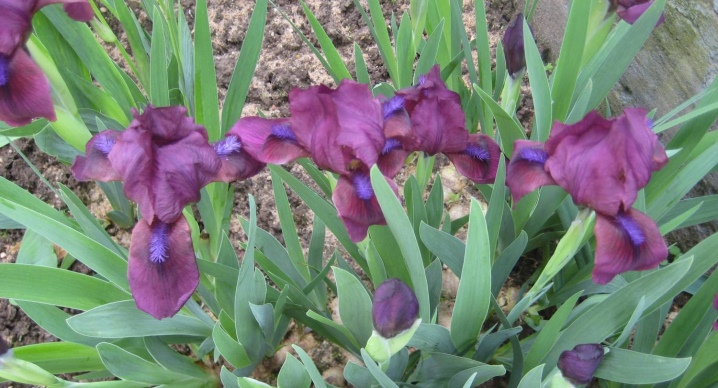
Diseases and pests of chrysanthemums: causes, symptoms, methods of struggle
Chrysanthemums are popular garden and indoor perennials, actively cultivated and very common in central Russia. Among their features, one can note the absence of the need for transplants, long and abundant flowering. They easily grow in one place for years, but this property often leads to the appearance of insects on the branches and the development of diseases for which novice growers are not at all ready.
Why do leaves curl and turn yellow? How to get rid of white rust on your home chrysanthemum? Is it possible to cope with the attack of pests in the garden at one time and how to cure the plant? All these issues require the most detailed consideration, because not only the chrysanthemum itself is under threat, but also its neighbors in the garden or home greenhouse.
There can be many reasons for the development of chrysanthemum diseases - from the appearance of insect pests (such as thrips or aphids) on the site to the spread of fungal diseases. Often, infection occurs from neighboring plants, this is how powdery mildew spreads. Improper care can be attributed to frequent sources of problems, which contributes to the creation of favorable conditions for the appearance of root rot. What can lead to plant diseases?
Among the mistakes made by inexperienced growers are:
- excessively abundant soil moisture;
- stagnation of water at the roots due to poor drainage;
- too cold air;
- lack or excess of fertilizers;
- fungal infection of the planting material;
- introduction of fresh manure.
In addition to problems associated with improper farming practices, chrysanthemums often suffer from infections that are activated in favorable weather conditions. If aphids appear on the site, it is worth examining the neighboring plants. Especially often it affects greenhouse and greenhouse chrysanthemums.
What should you pay attention to, how to diagnose the appearance of diseases and pests? It is worth regularly inspecting the plant, do not neglect caring for it. Symptoms of parasitic insect infestation on chrysanthemums most often look like this
- With thrips, dots or spots appear on the leaves, then they turn yellow, discolor, wilt, dry and fall off. The insect itself is small, with an elongated body, juveniles are yellow-beige, adults with glossy black backs, winged. You can look for them on the back of the leaves.
- With a leaf nematode, the leaves are covered with yellow-brown spots that gradually grow over the entire surface. The foliage first dies off and curls up in the lower part of the stem, then the upper shoots die. Infected bushes are destroyed.
- With aphids, the symptoms can be different, depending on the type of pest itself. Most often, the inflorescence of a plant is affected by the brown subtype, which leaves traces of its vital activity inside. Pests look like small dark brown or black beetles.The greenhouse aphid is pink or green in color, is located in colonies on the stem or in the lower part of the leaf, sucks out juices, leading to wilting and death of the flower.
- When a spider mite is affected, traces of cobwebs can be seen on the back of the leaves, the leaves of the plant dry, the shoots wither and turn yellow. In hot weather, the parasite is especially active.
- When leafhoppers or slobbering pennits appear, foamy traces of insect activity appear on the plant. It feeds exclusively on flower sap.
- When meadow bugs attack, the buds disappear, they are deformed, like the shoots, and the development of the chrysanthemum is disrupted.

